Lifting boats by Mammoet and Roll-Lift
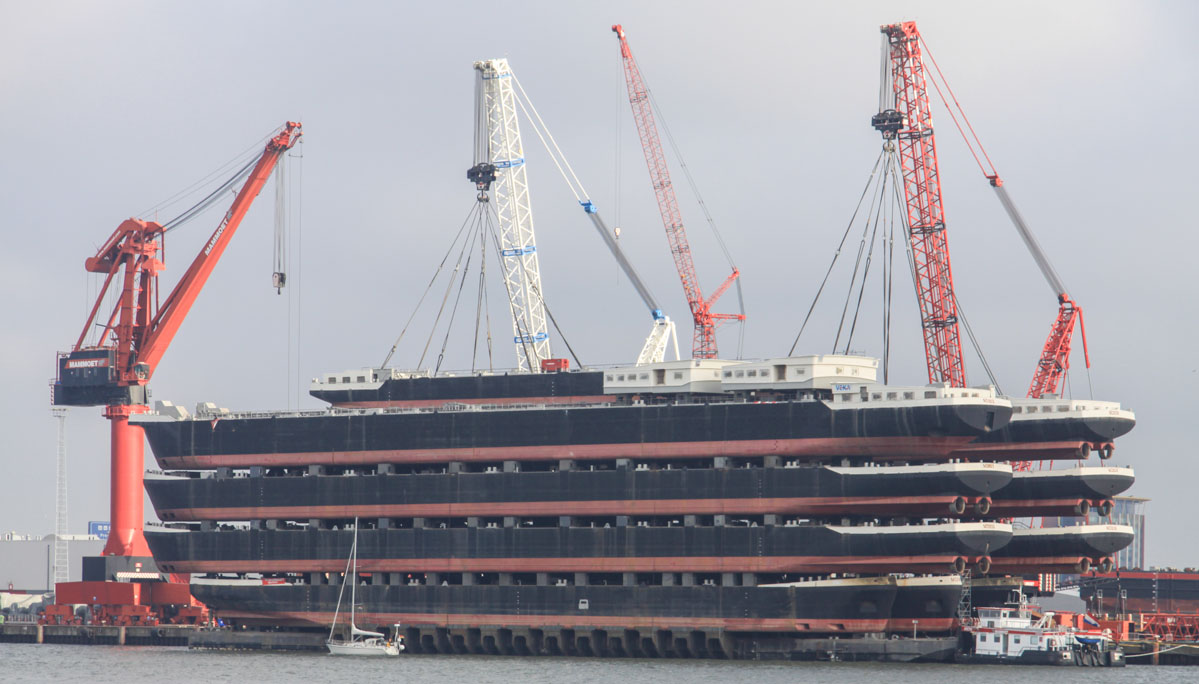
A very big pontoon with new barges was driven from China to the Netherlands. Because no floating cranes were available mobile cranes were used from land.
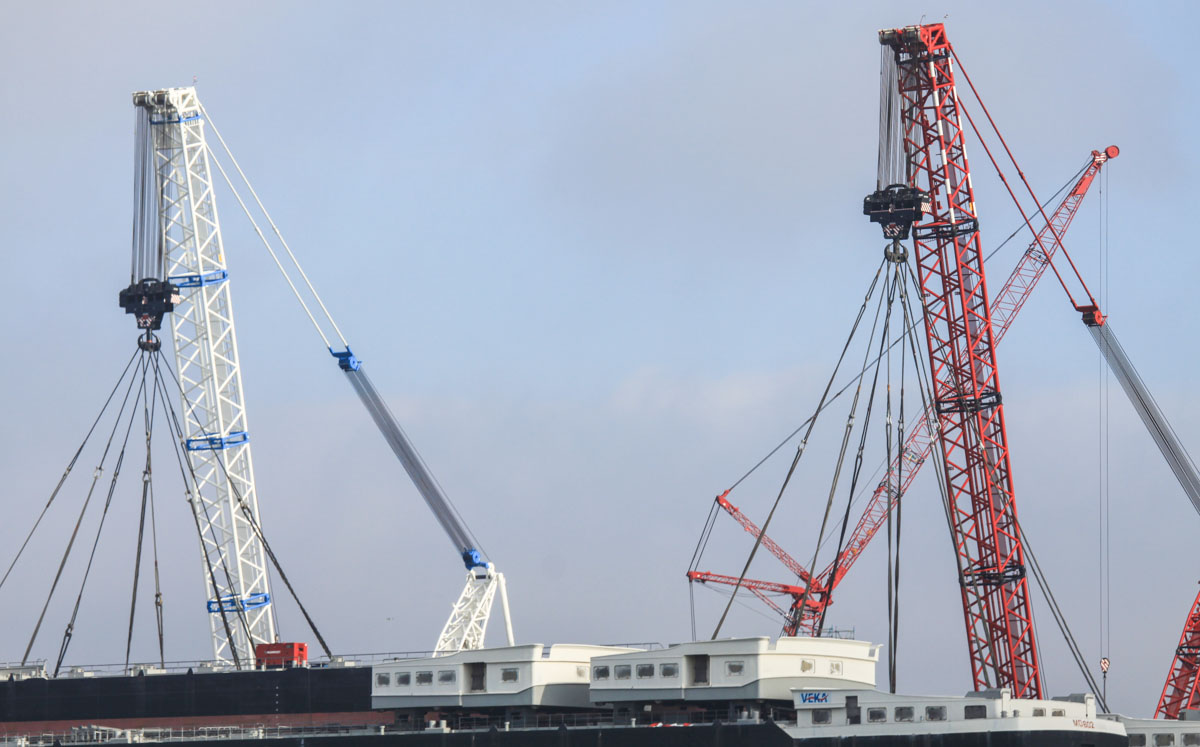
The cranes are two Liebherr LR 11350 from Mammoet and Roll-Lift. The Roll-Lift crane is official mentioned as LR 11350-P and is the first 11350 that could be used with the P-Boom. See also the Liebherr LR 13000.
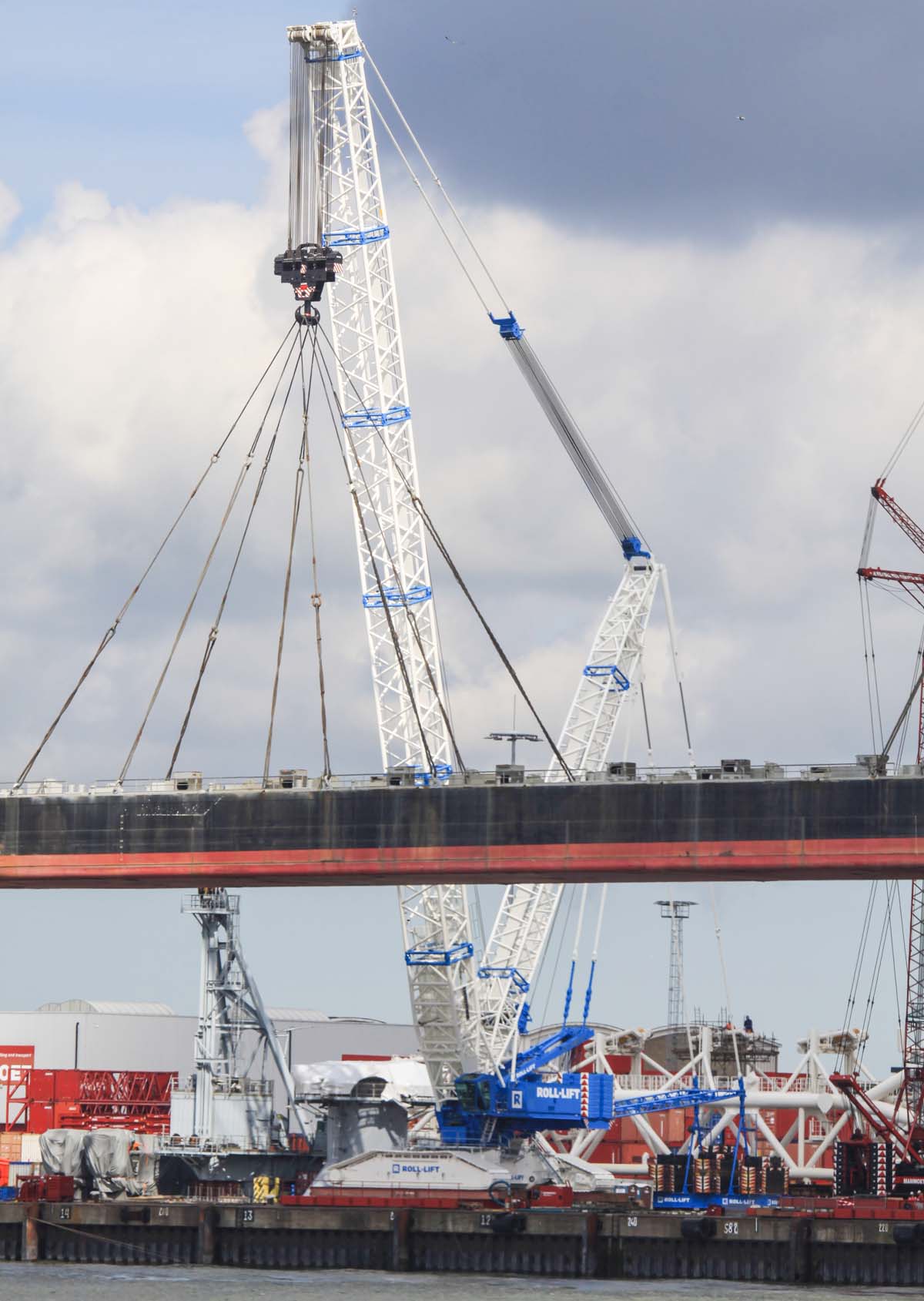
The load is hoisted by the cranes, the pontoon with the boats is driving backwards.
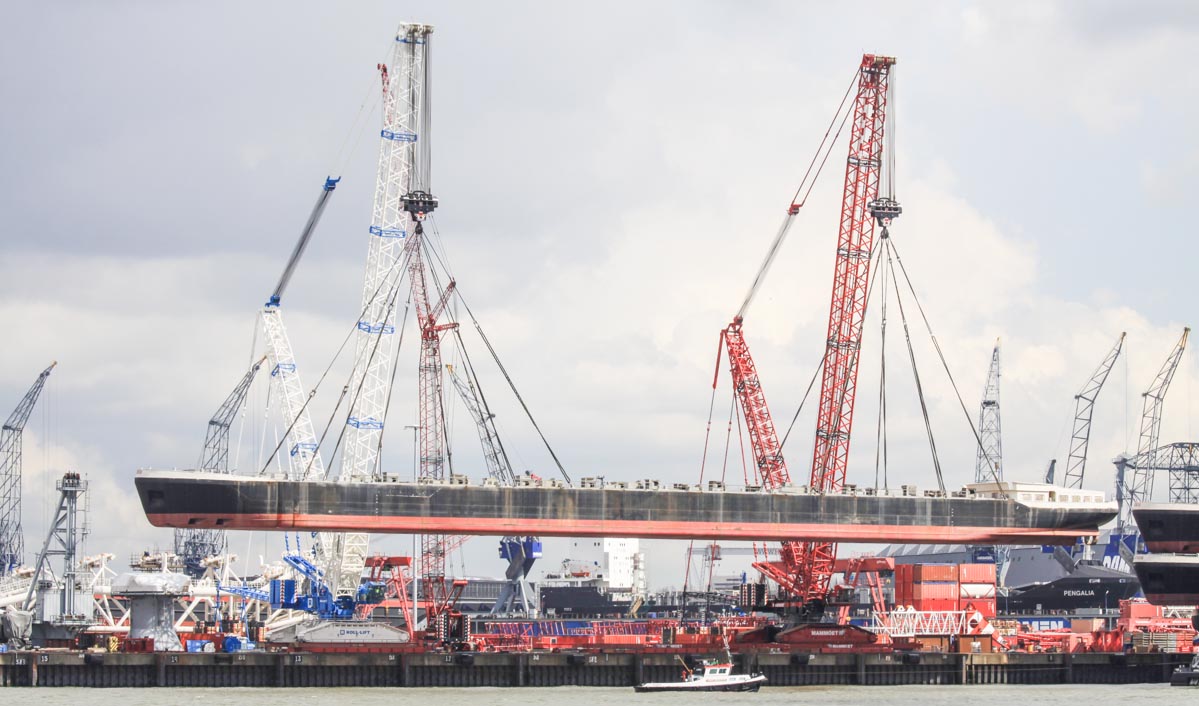
Then the boat is lowered into the water. Both cranes are fitted with an 84 meter main boom.
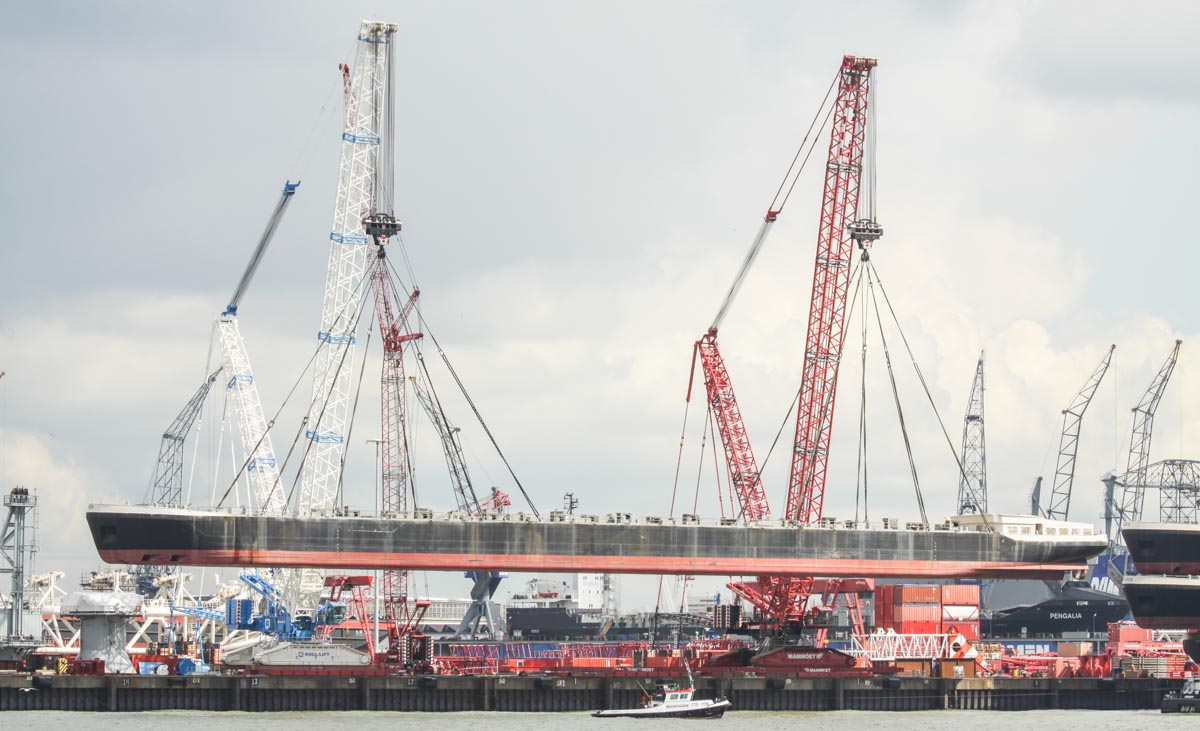
This boat weights about 1000 tonnes.
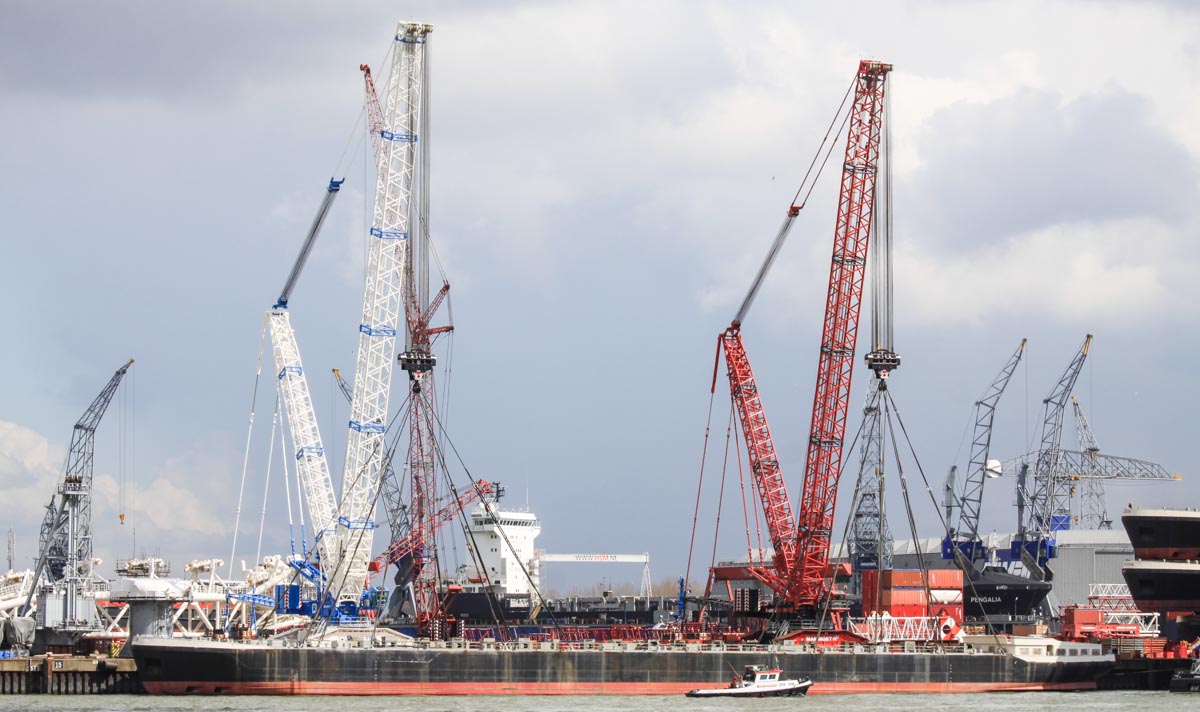
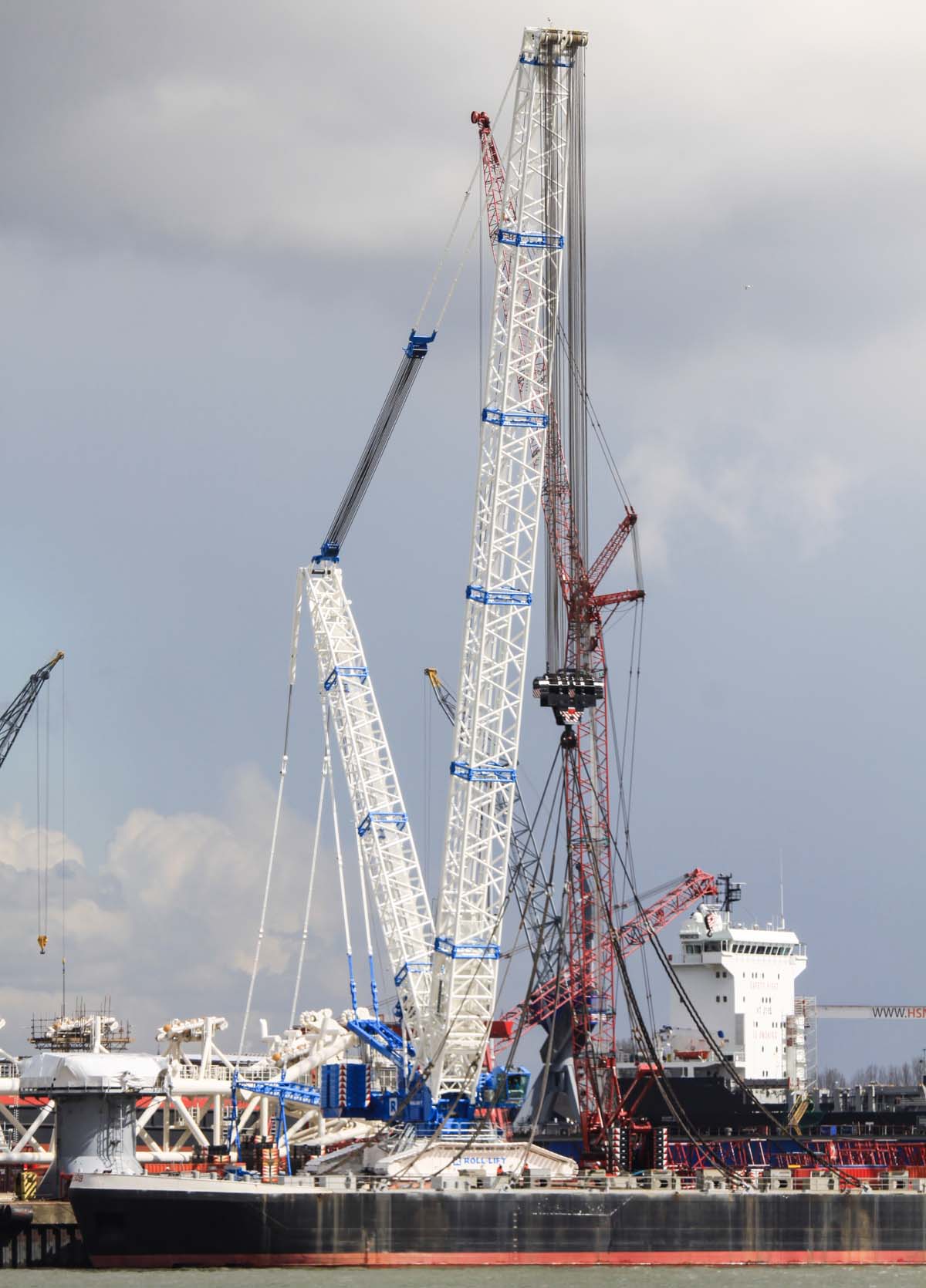
The derrick boom is 42 meters long, the superlift counterweight is making a 30 meter radius.
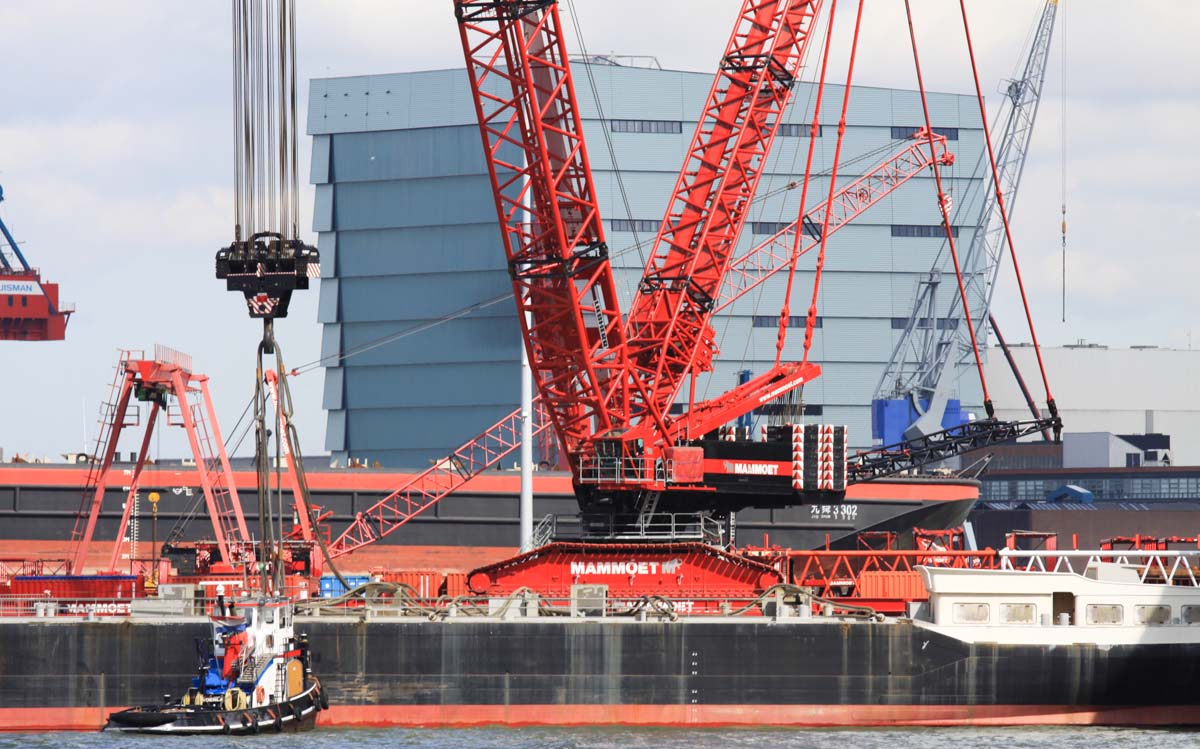
The undercarriage of the crane is 14.5 meters long and 13 meters wide.
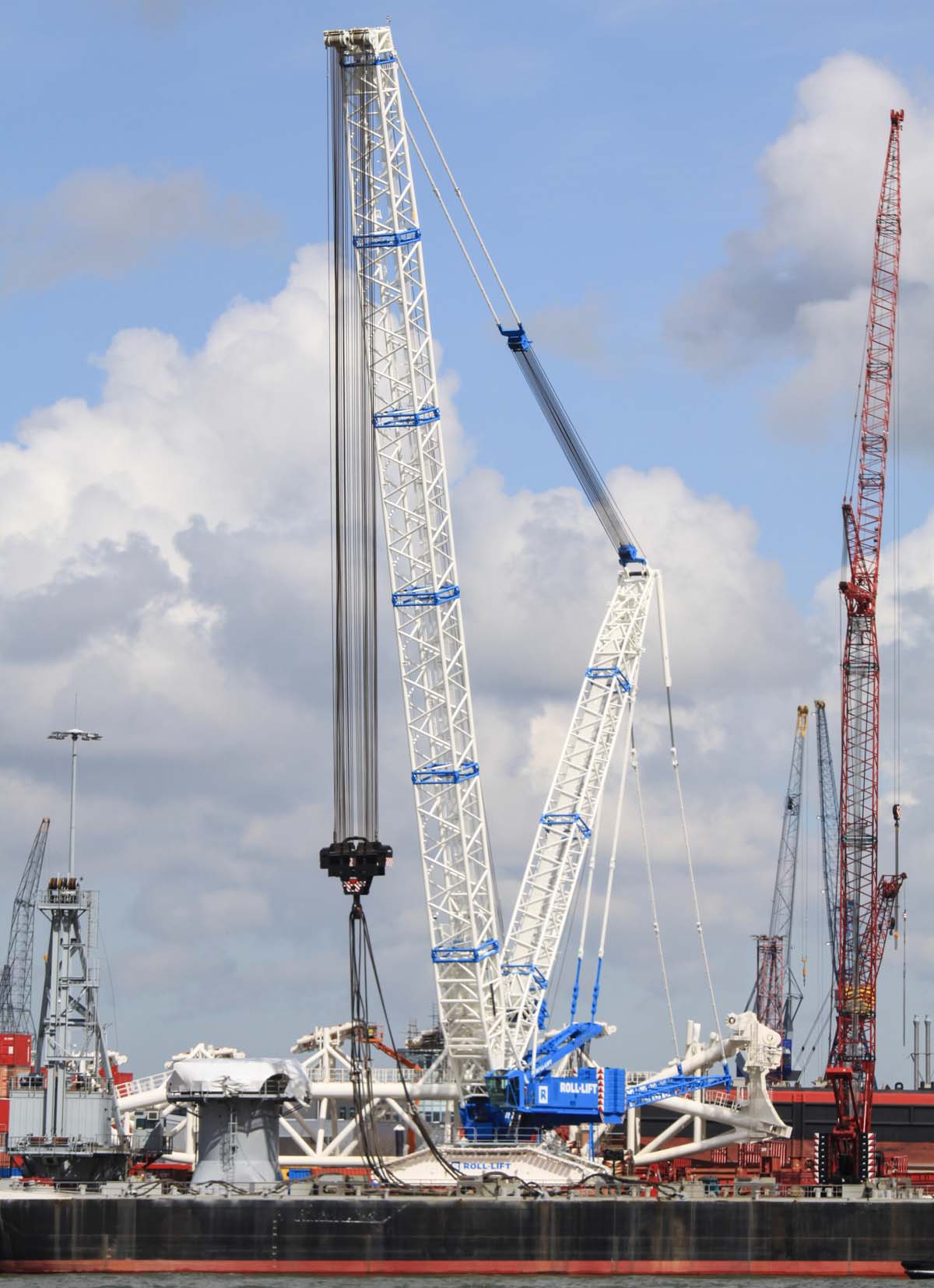
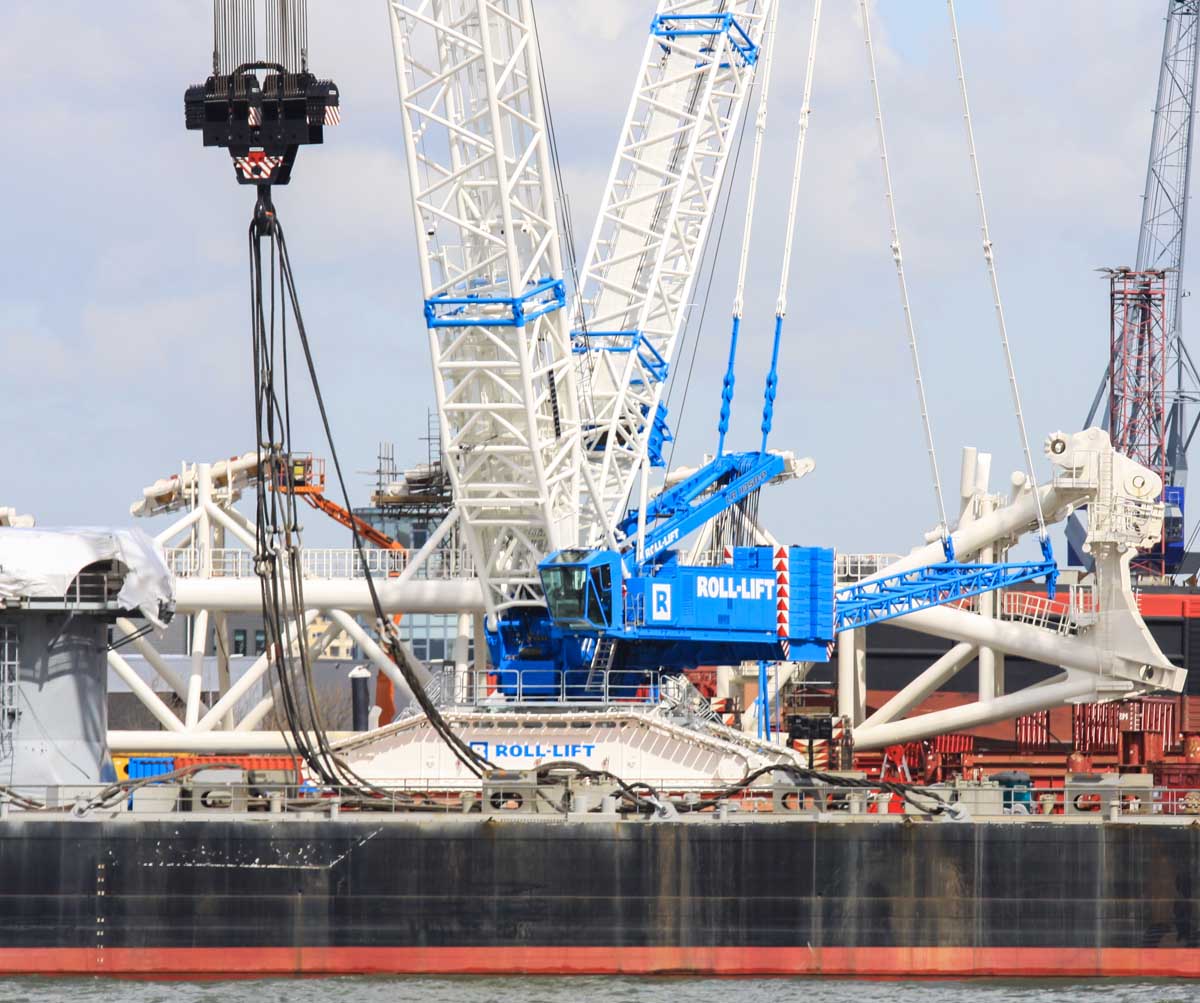
The boom foot of the Roll-Lift crane is much heavier constructed as the Mammoet one. Both cranes have the same max. capacity of 1,350 tonnes, but the Roll-Lift crane has because of the P-Boom a much stronger lifting chart, compareble with an 1,800 tonne crane.
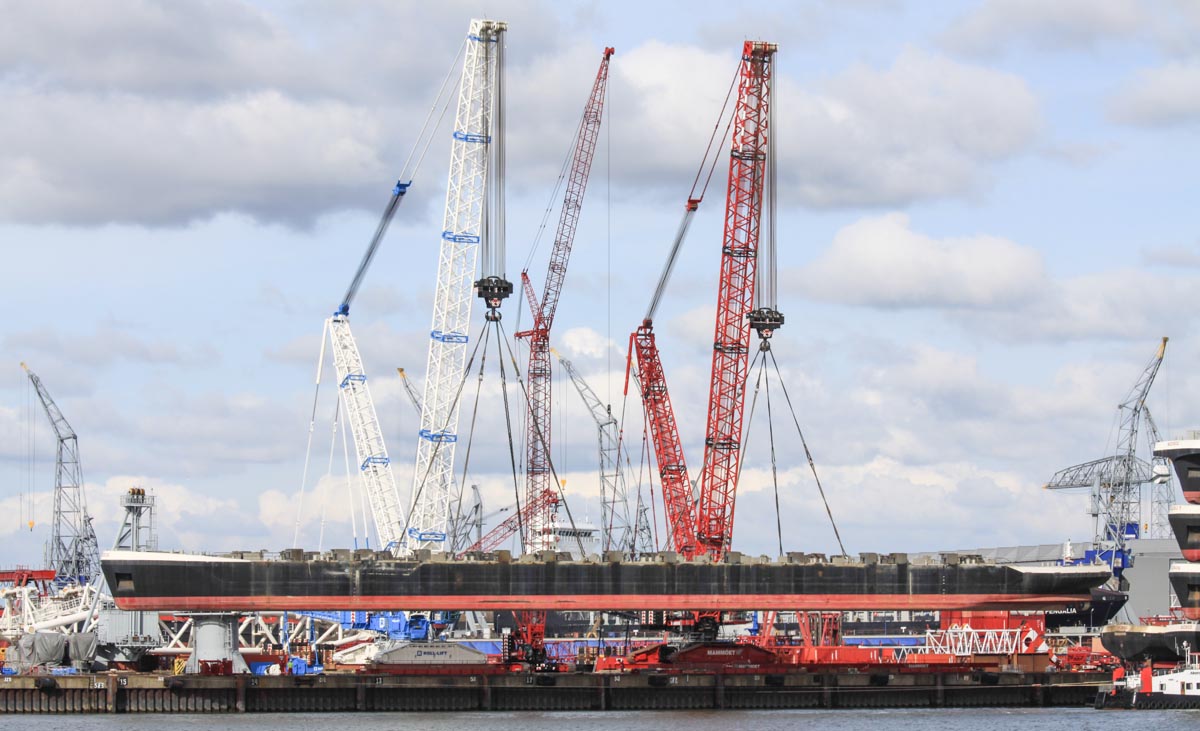
Some days later the cranes could show there muscles again.
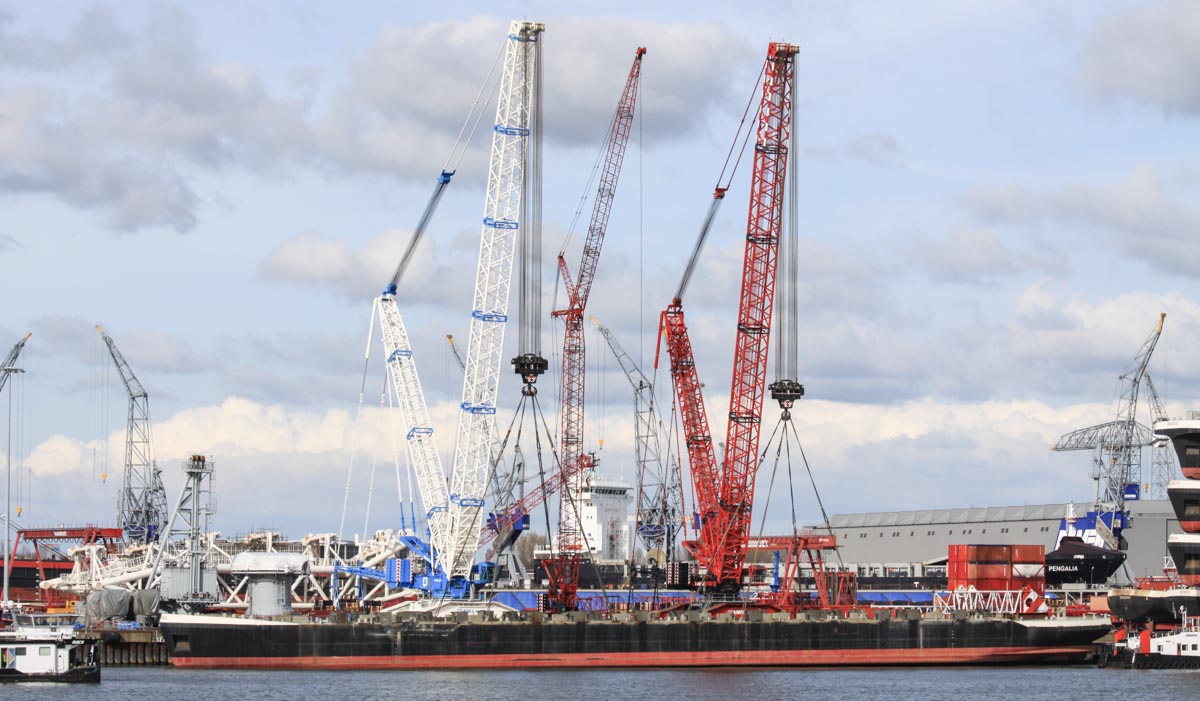
This is an 1,600 tonne boat.
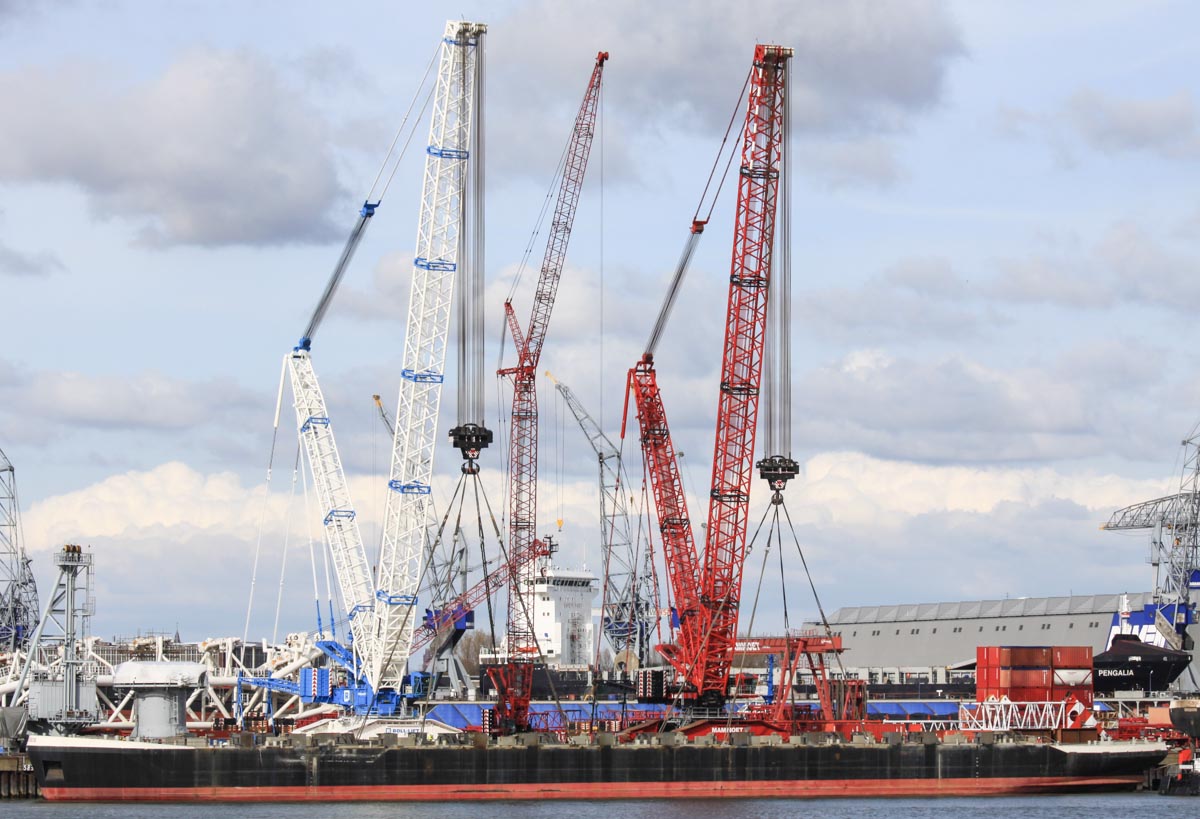
The cranes have in this configuration a max. capacity of 859 tonnes.
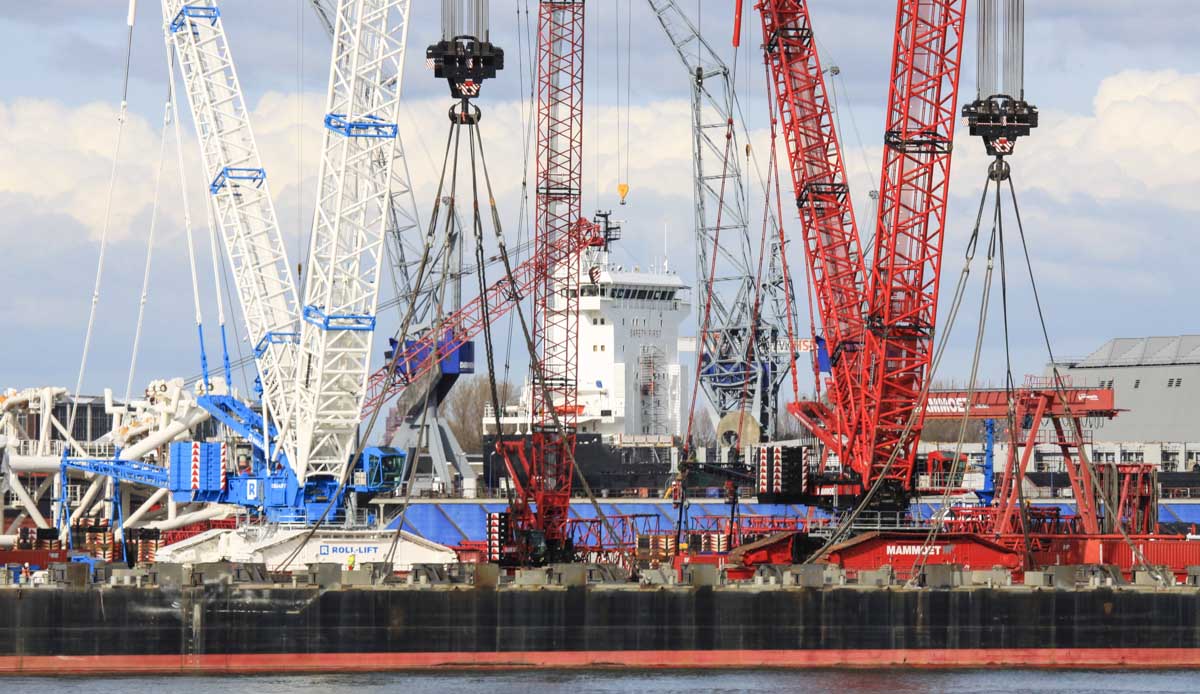
As assist crane to hoist the slings and shackles is standing between the cranes a Kobelco CKE2500-2.
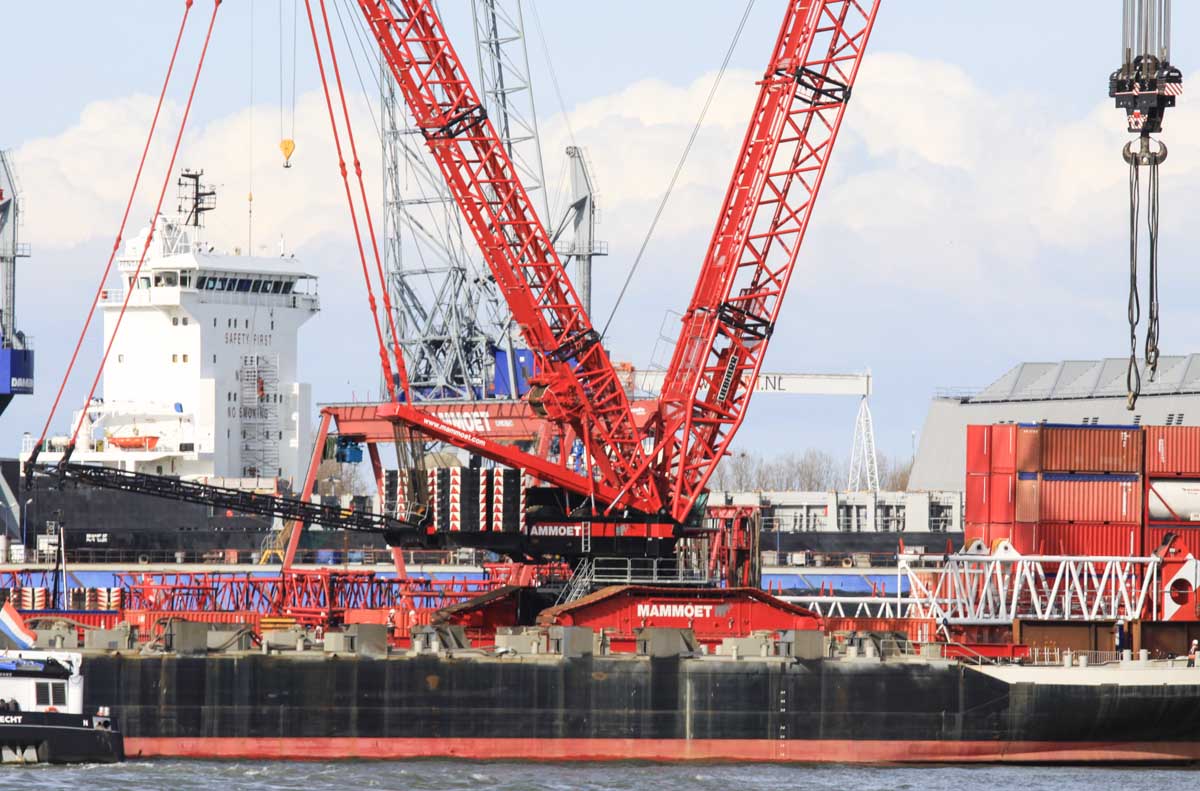
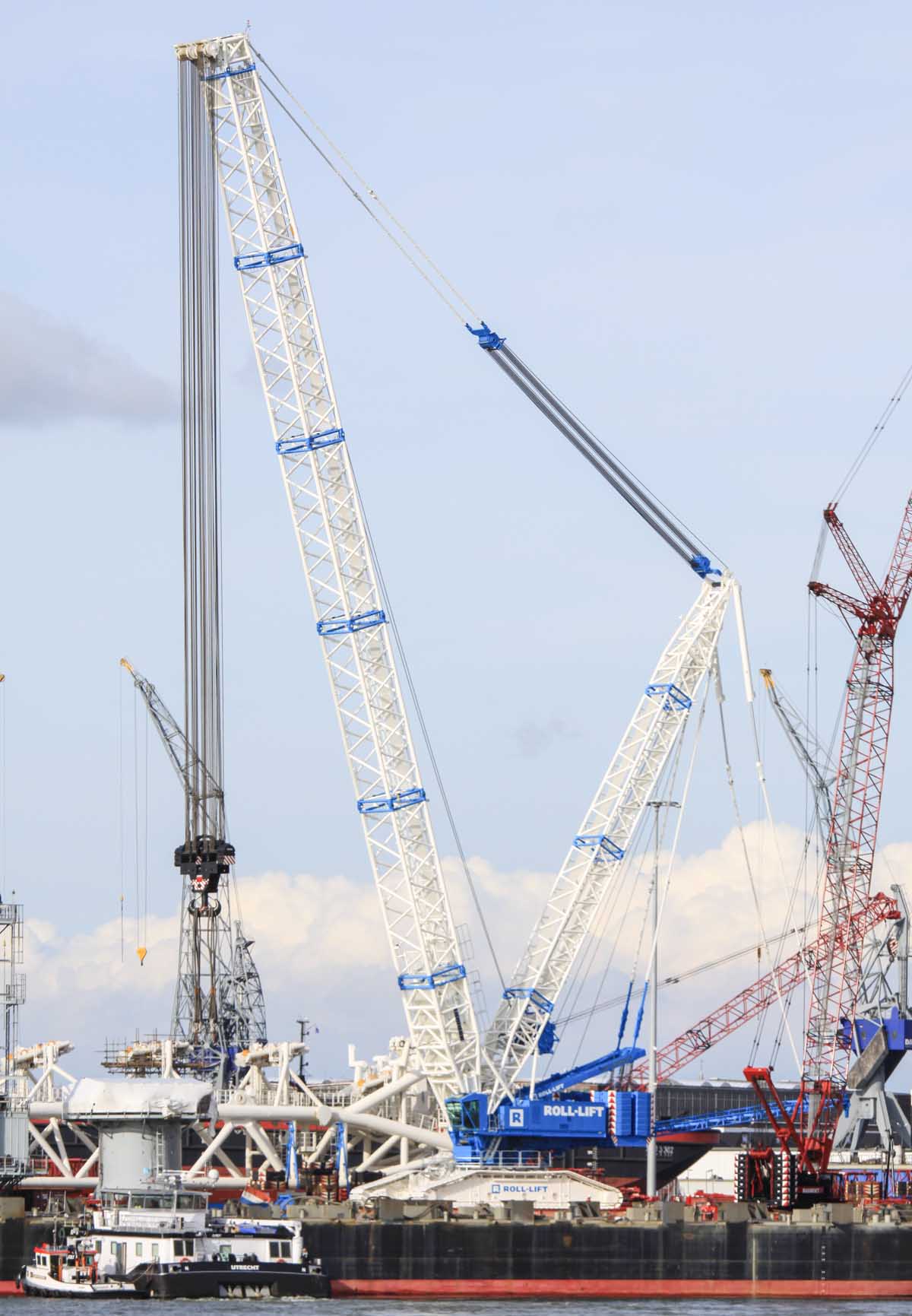
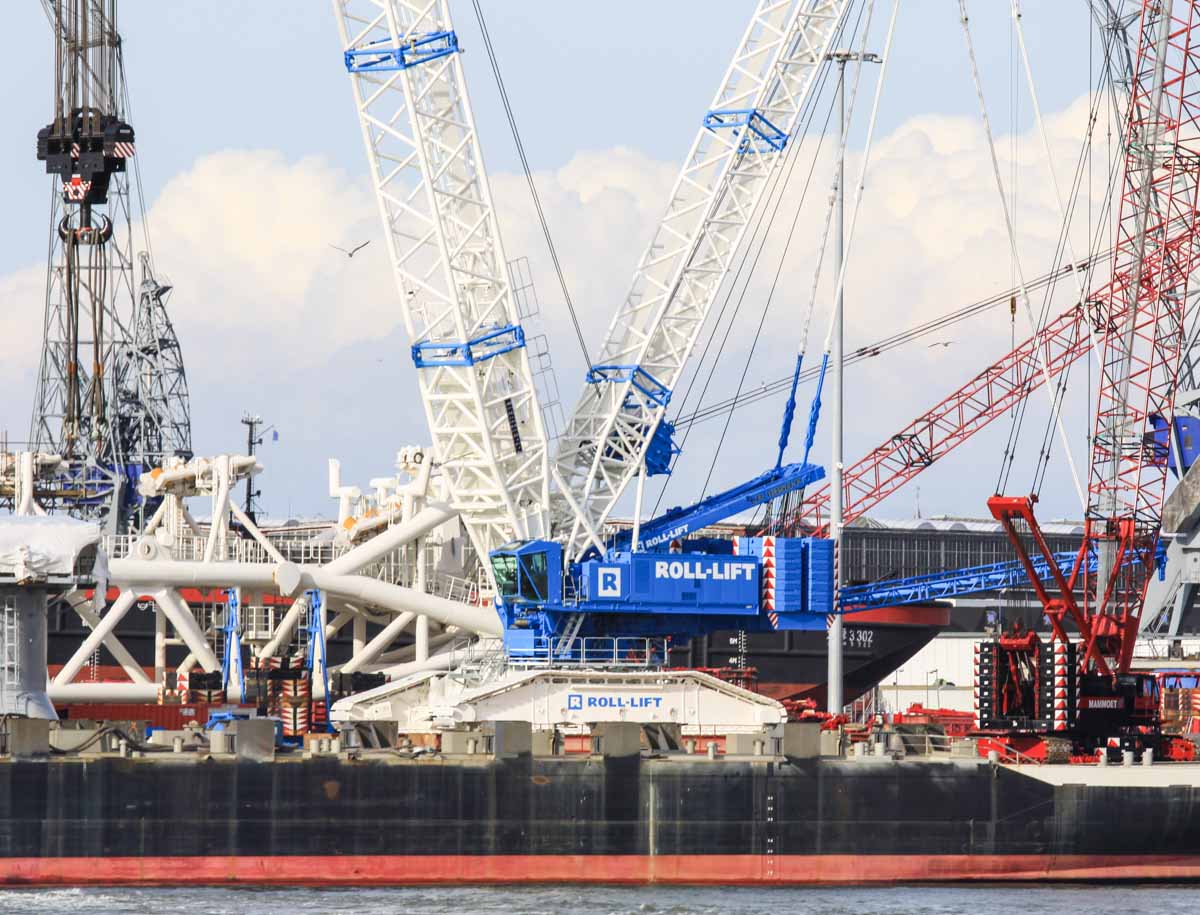
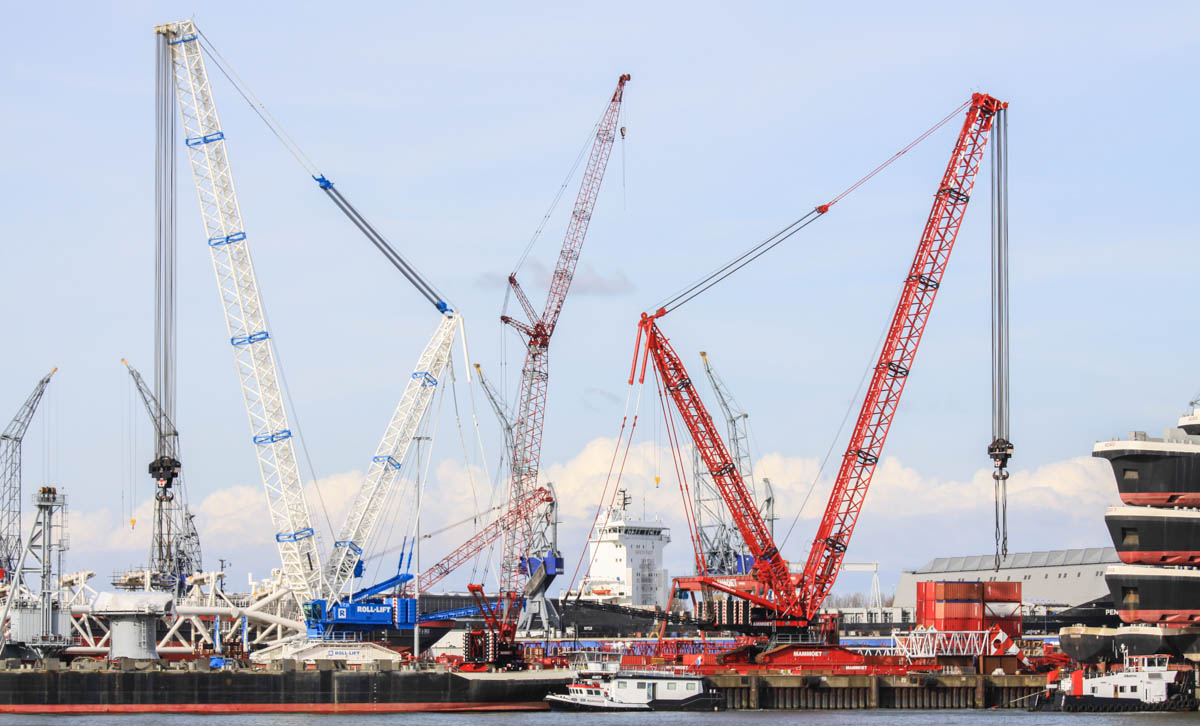
The cranes in weekend-position.
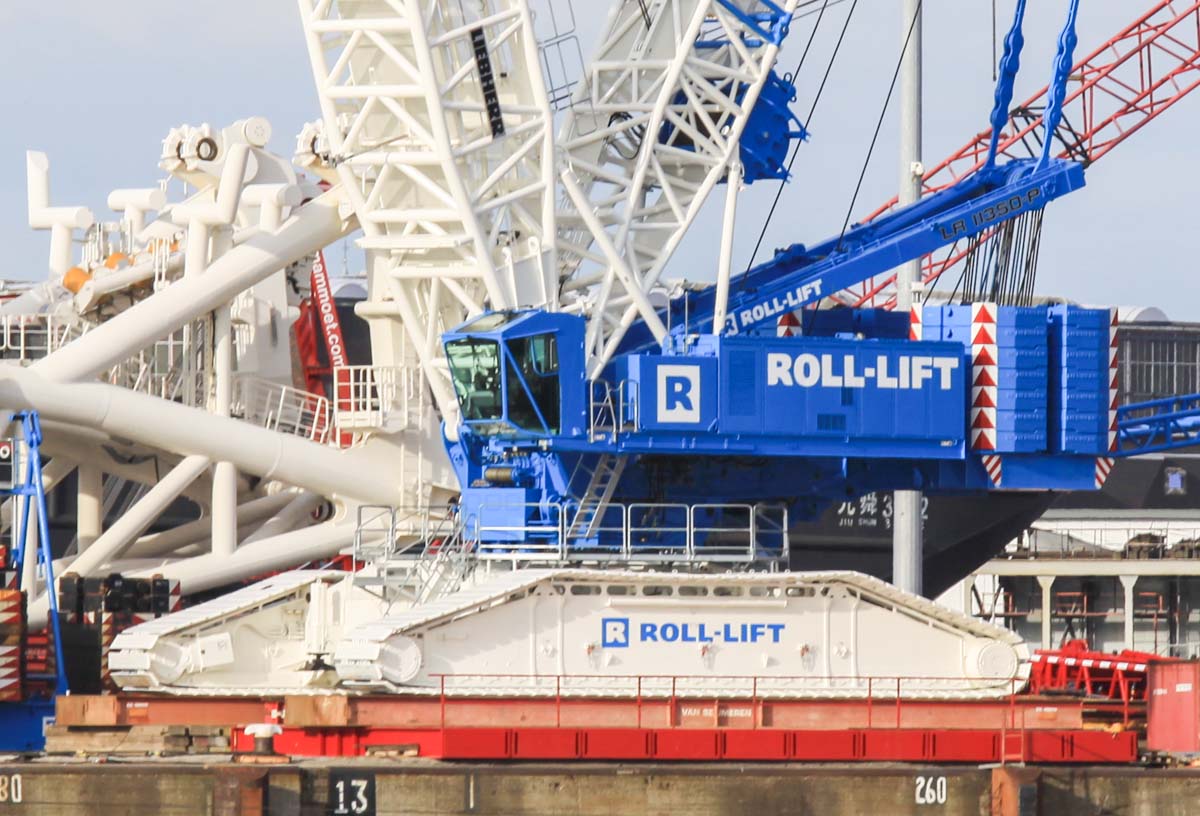
Closing with a detail of the Liebherr LR 11350-P of Roll-Lift. A Dutch company that is mainly active in South-America and Russia.